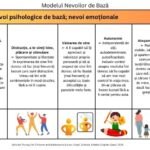
Muscles – Organs of Longevity: Dr. Mindy Pelz’s Perspective
27 July 2024
Basic Needs: The Foundation of Mental and Emotional Health
29 August 2024Migraine, a major form of headache, is among the leading causes of disability worldwide. It affects millions of people, significantly reducing quality of life. In the search for effective treatments for migraine, two antidepressant drugs – amitriptyline and venlafaxine – were analyzed to compare their effects on reducing the severity and frequency of migraine attacks.
Aims of the Study
The present study aimed to compare the effects of amitriptyline (AMT) and venlafaxine (VLF) in reducing the severity and number of migraine attacks. The study aimed to provide a clear insight into the efficacy and safety of these two drugs, thus helping to choose an optimal treatment for patients.
Methods
Study participants were patients with migraine attacks who were randomly divided into two groups. The first group received amitriptyline at a dose of 25 mg every evening and the second group received venlafaxine at a dose of 37.5 mg daily. The duration of treatment was eight weeks.
Results
The study included 80 patients, 57.5% of whom were women. The average age of participants was 33 years and the average duration of illness was eight years. Both amitriptyline and venlafaxine significantly reduced the number of attacks per month and the HIT-6 (Headache Impact Test) score:
– Amitriptyline: The number of attacks decreased from 10.98 to 2.98 per month and the HIT-6 score from 67.78 to 49.73.
– Venlafaxine: Number of attacks decreased from 9.98 to 3.18 per month, and HIT-6 score from 66.65 to 48.88.
There was no significant difference between the two drugs in reducing migraine attacks or HIT-6 score. There was also no significant relationship between age or duration of illness and HIT-6 score. However, the decrease in HIT-6 score was greater in men than in women, suggesting a modifying role of gender.
In terms of adverse effects, patients in the amitriptyline group reported more adverse reactions than those in the venlafaxine group.
Conclusions
The study showed that amitriptyline and venlafaxine are both effective in reducing the intensity and duration of migraine attacks, with a more pronounced efficacy in male patients. However, venlafaxine has been shown to be better tolerated, with fewer side effects reported. Therefore, venlafaxine might be preferred in the prophylactic treatment of migraine, especially for patients who are sensitive to the side effects of amitriptyline.
Migraine is a complex condition and effective treatment often requires a personalized approach. This study provides valuable information that can guide physicians in choosing an appropriate treatment for their patients, given the efficacy and tolerability of the drugs studied.


